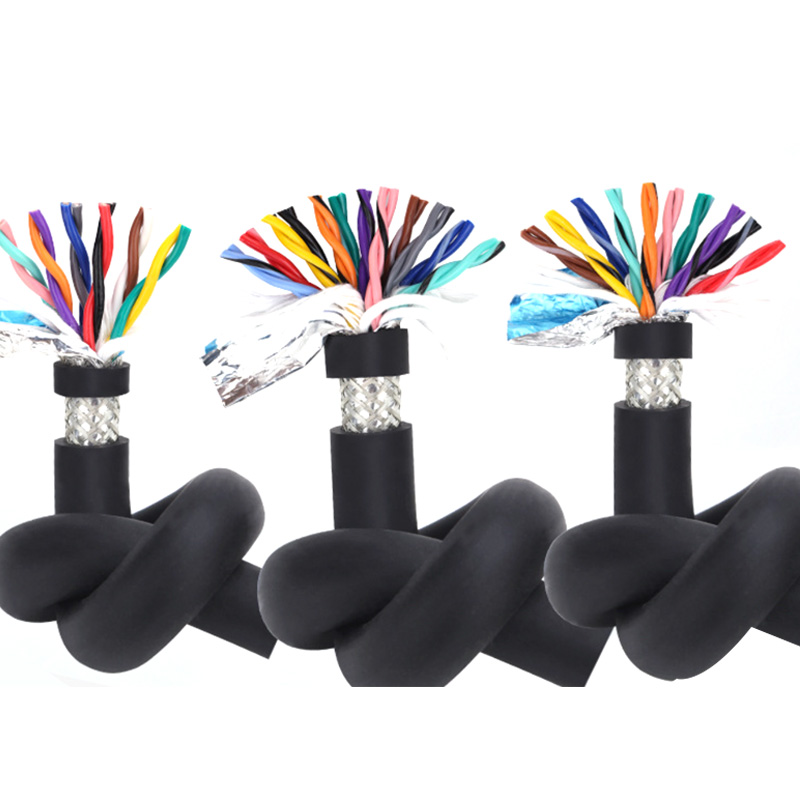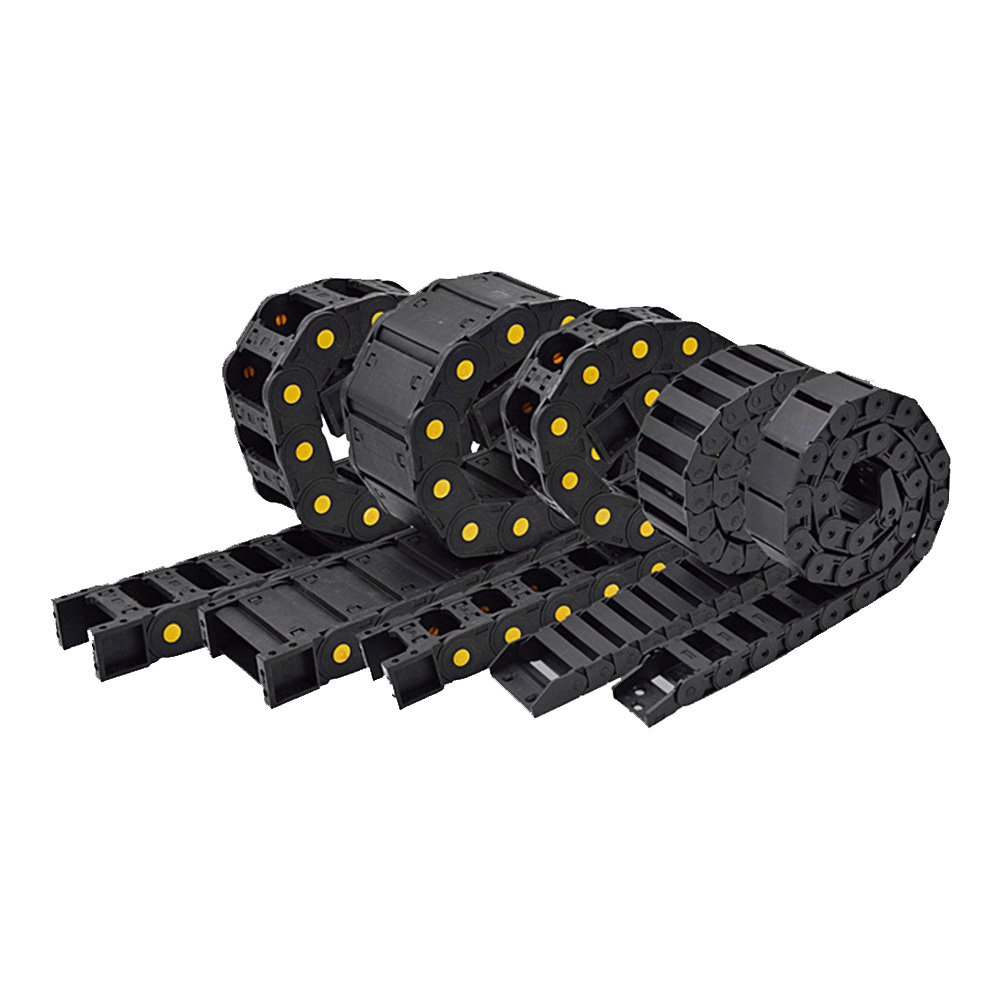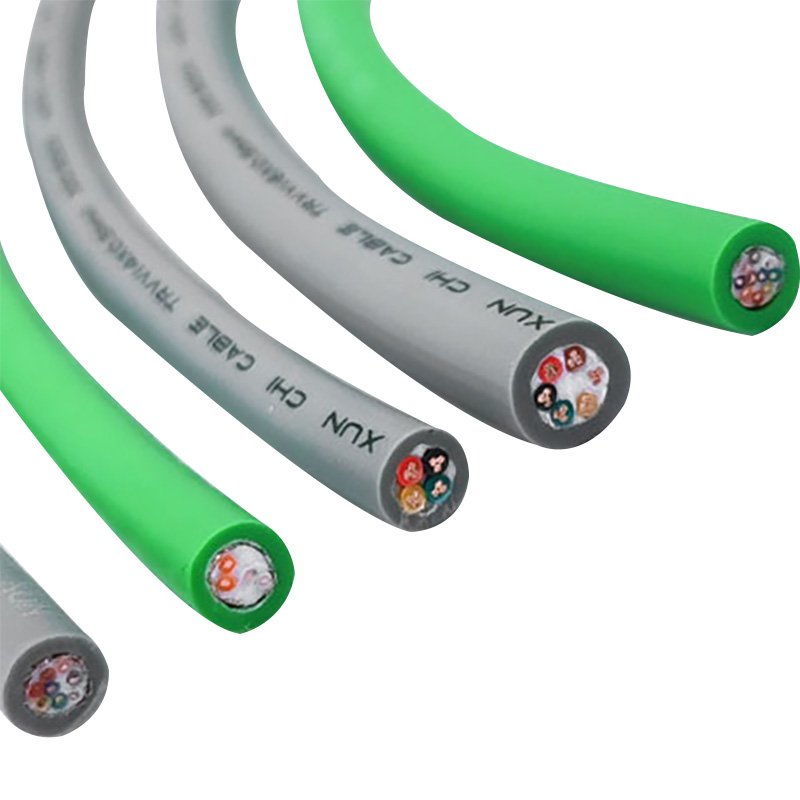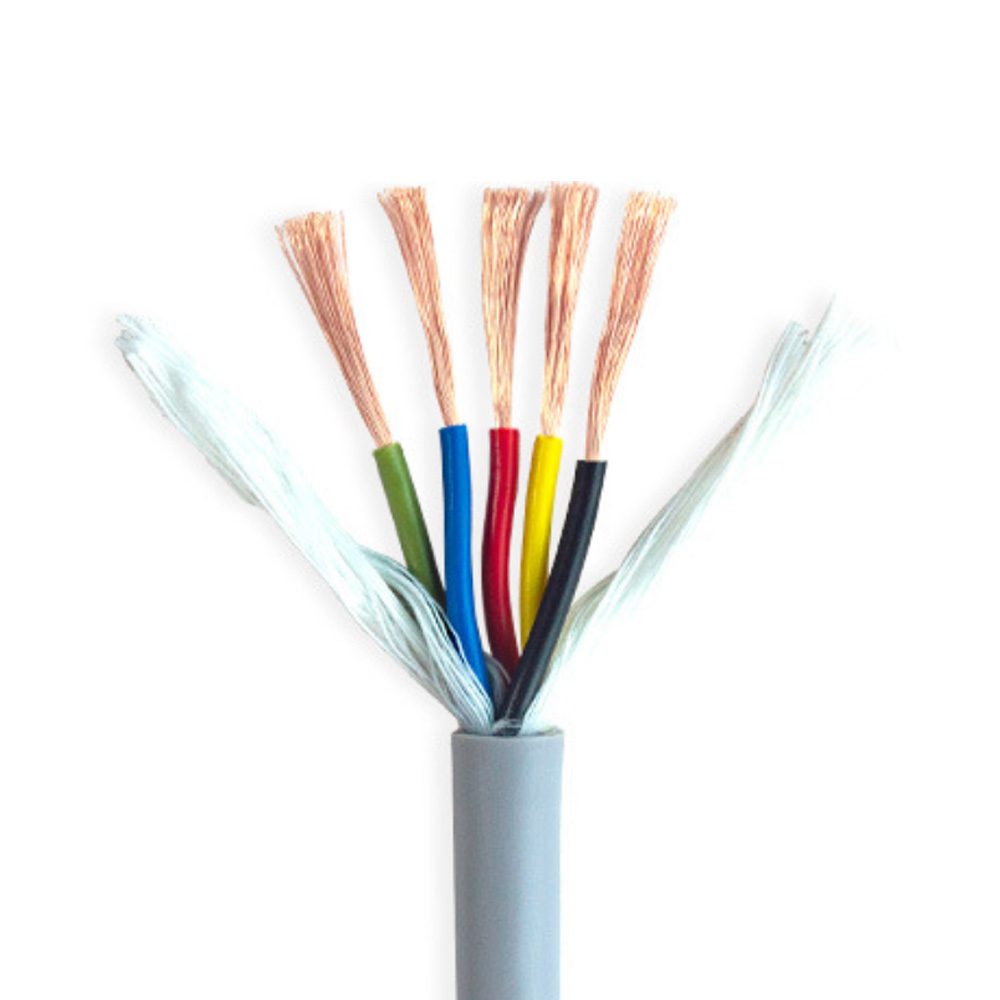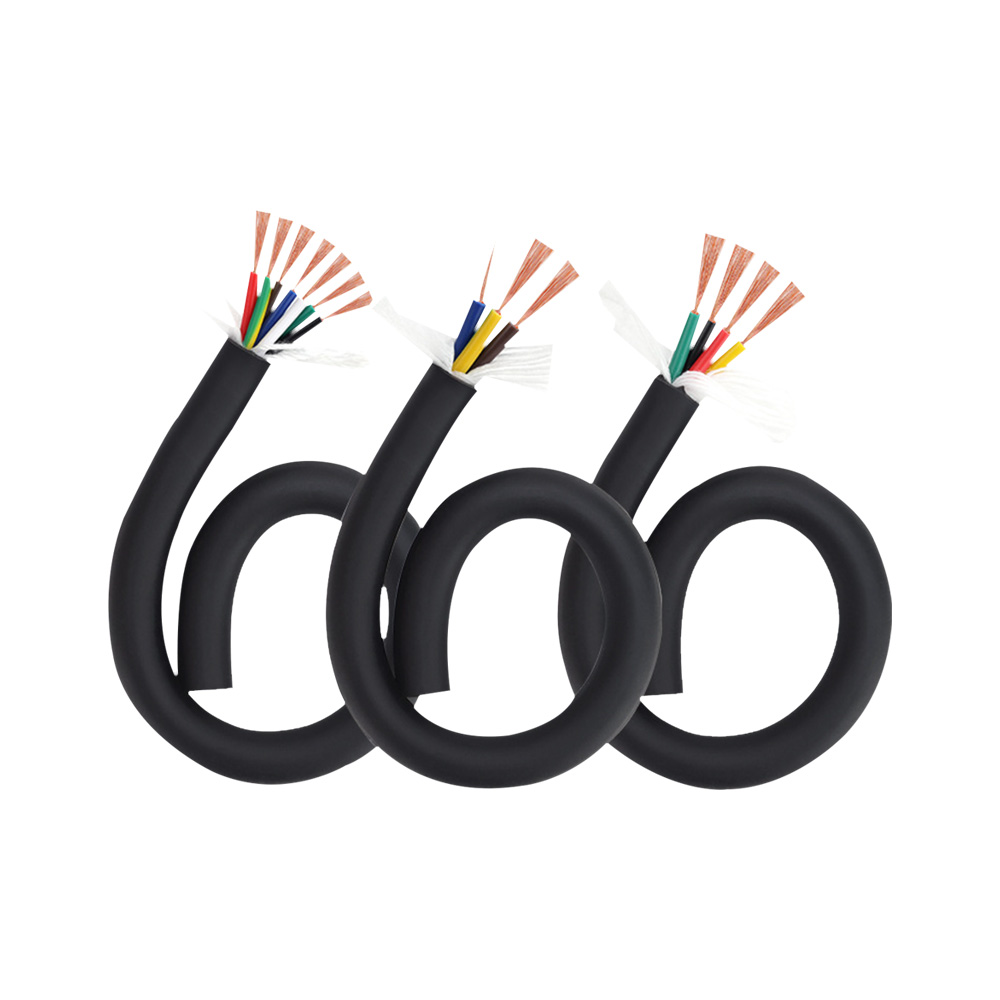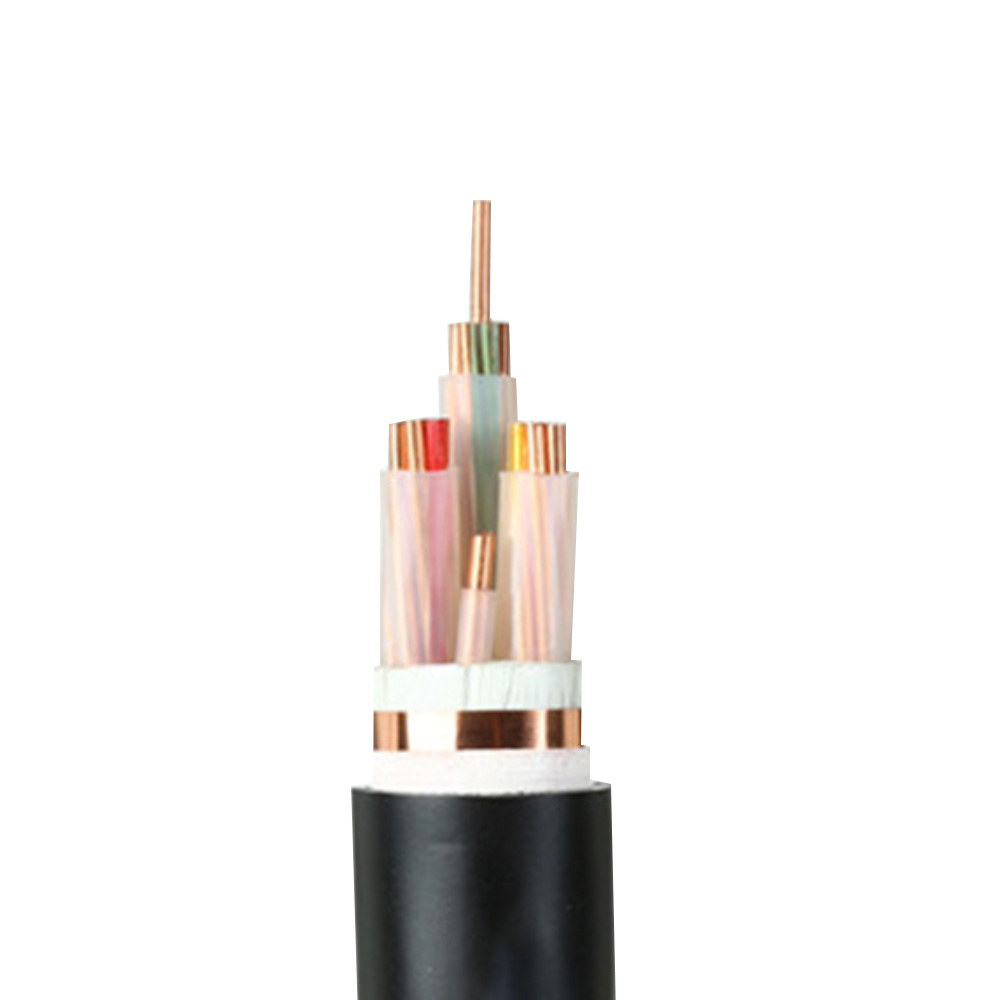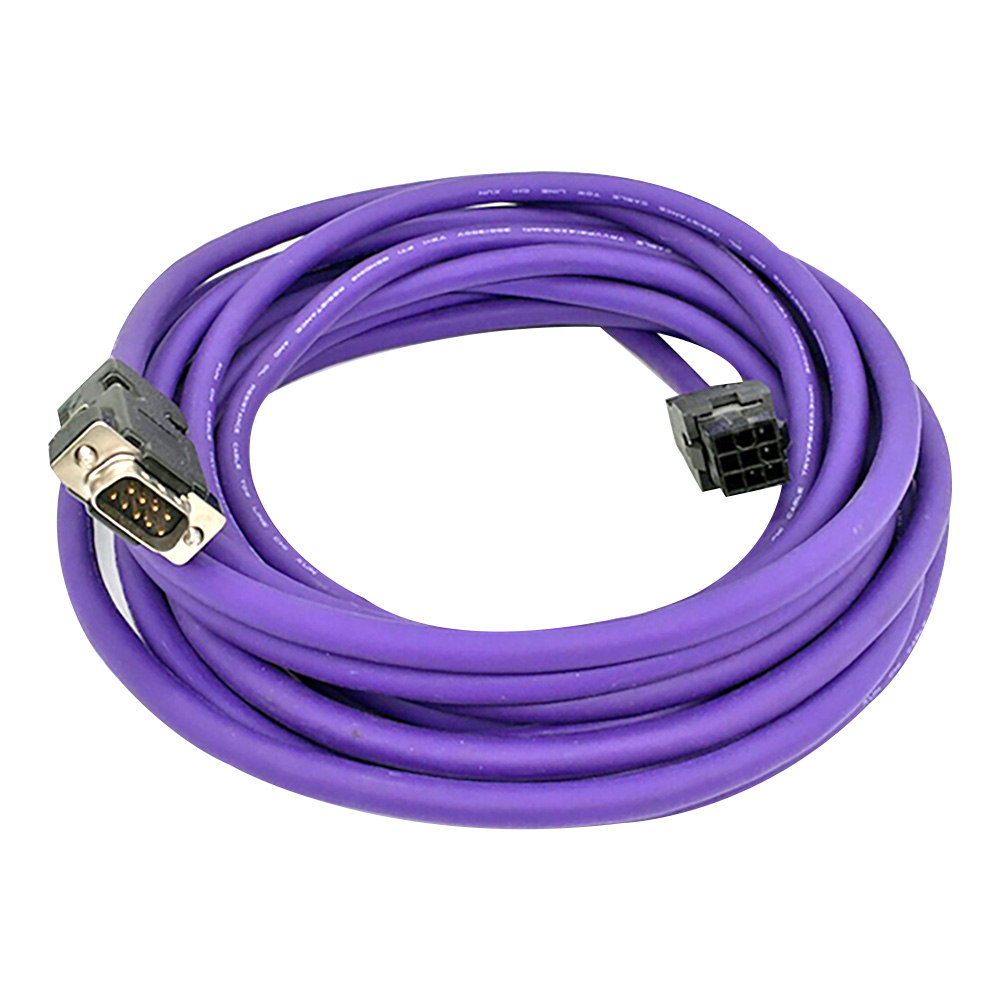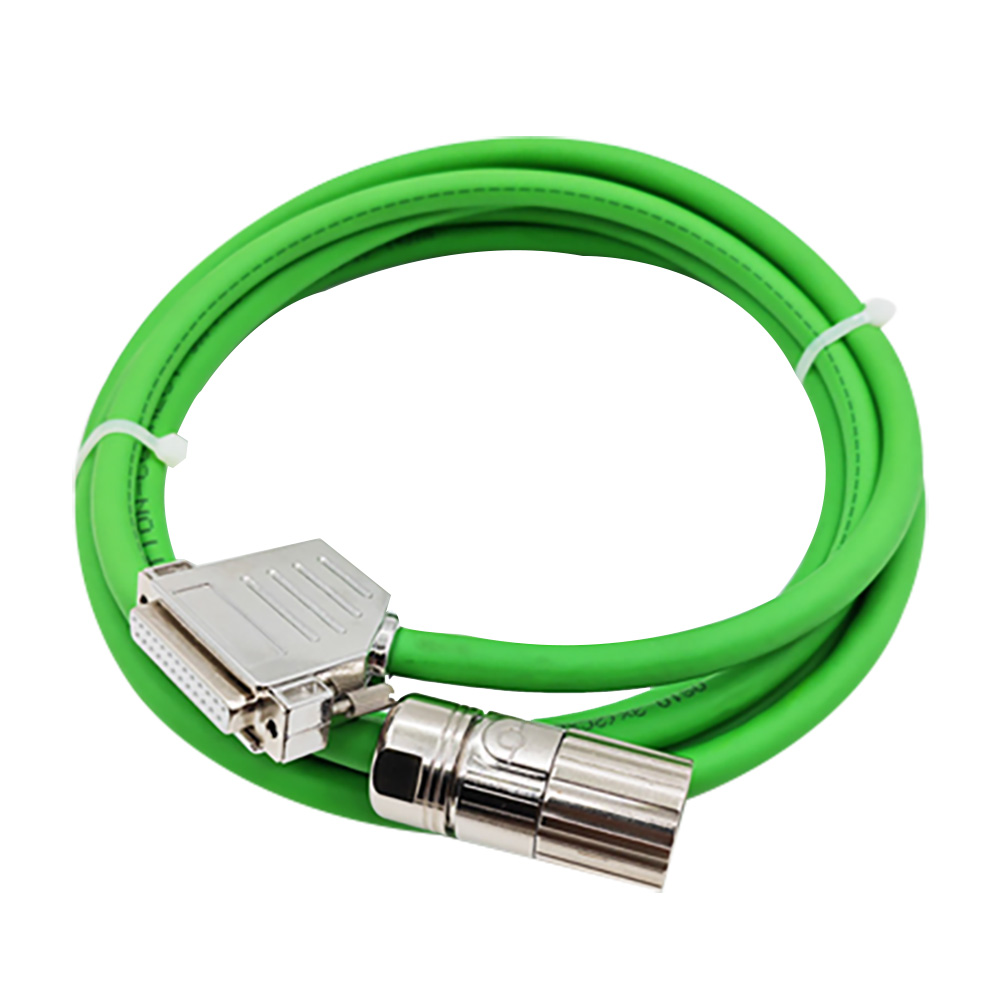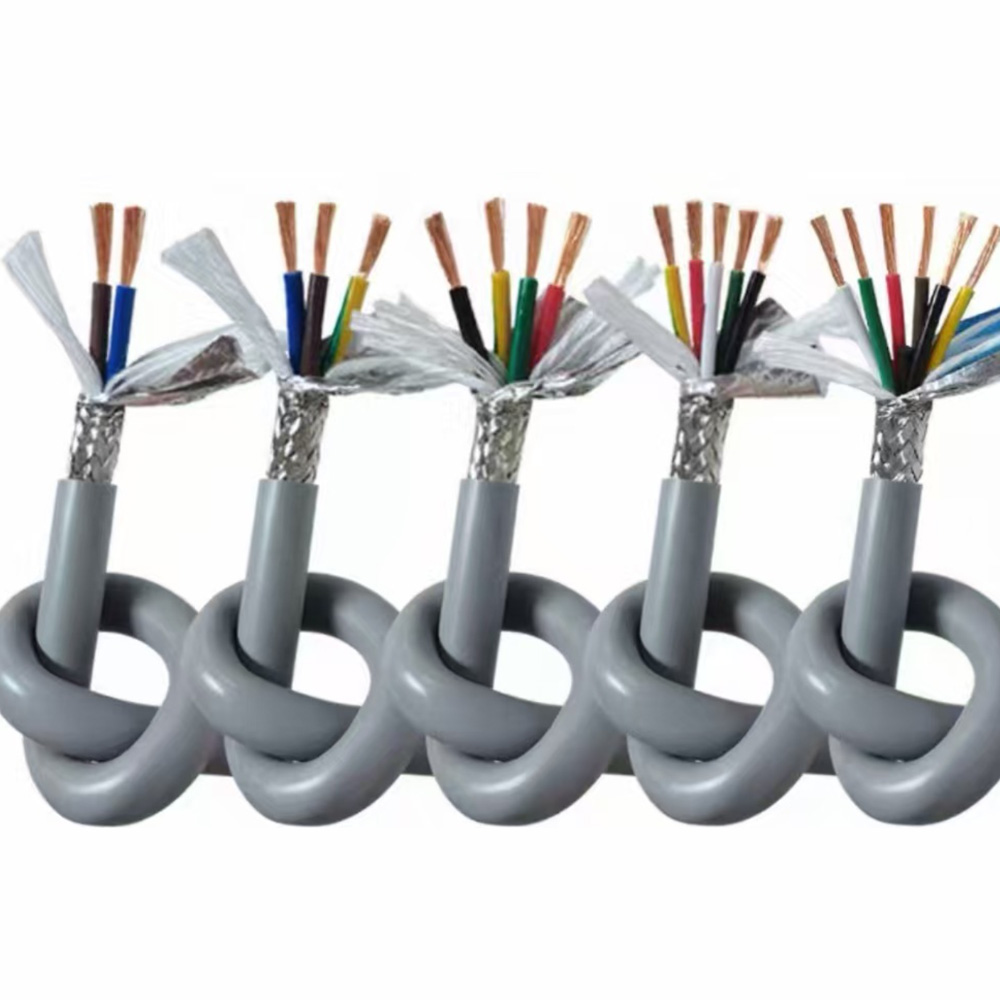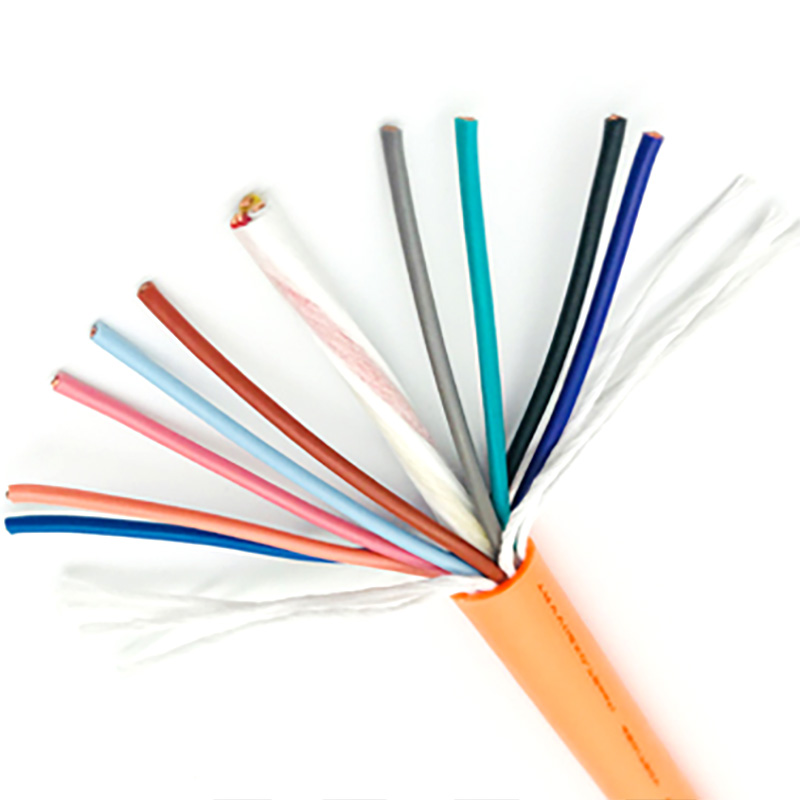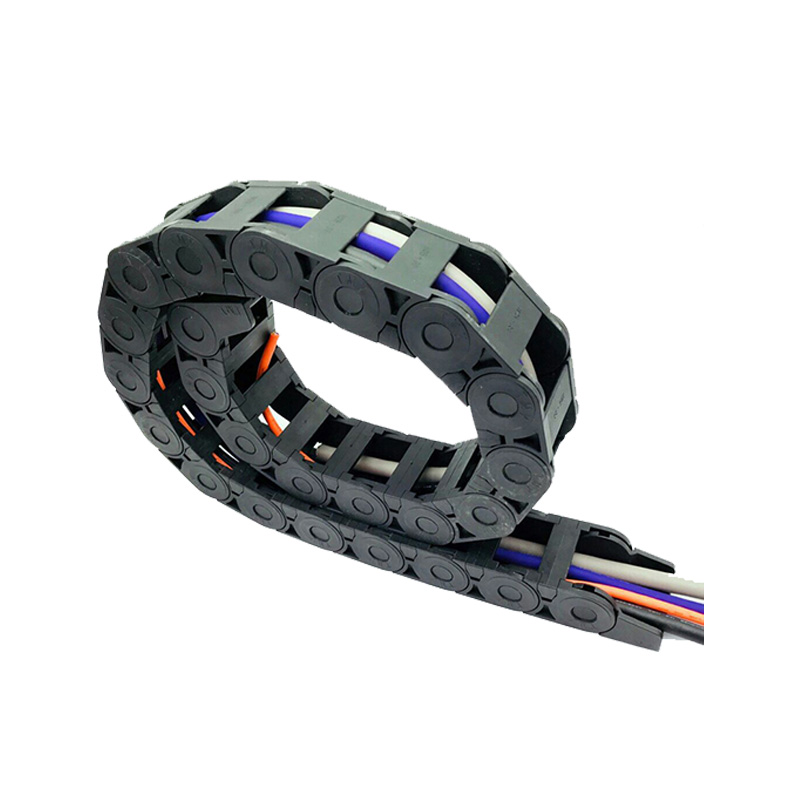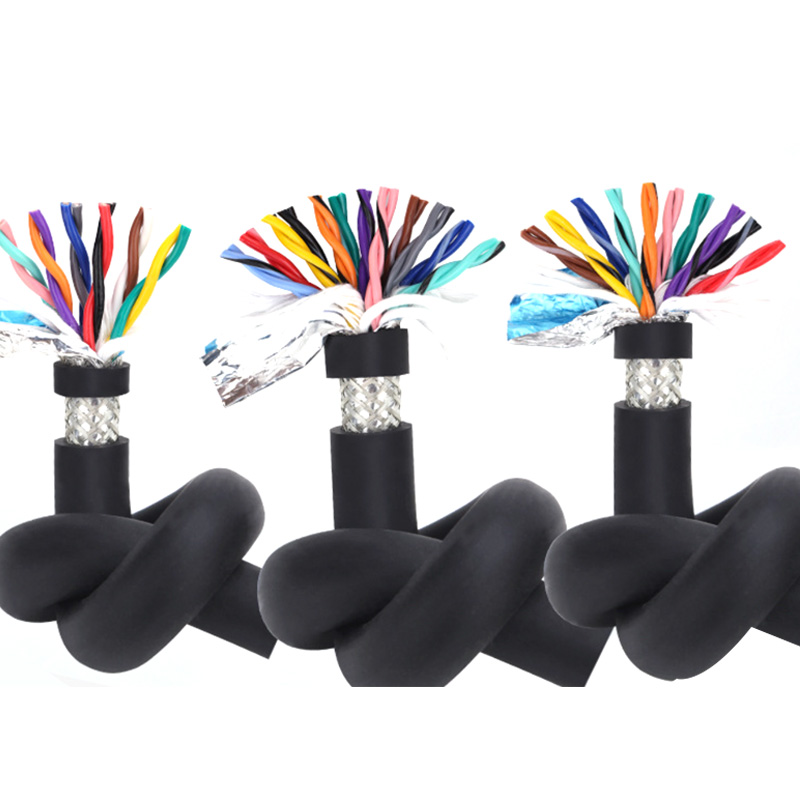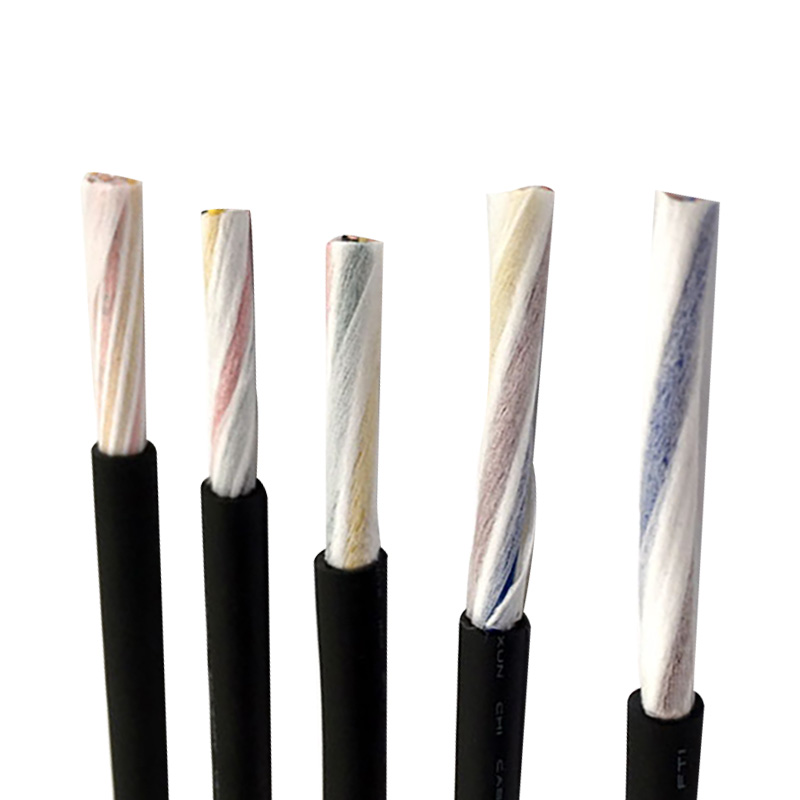
STP Cable
TRVVPS Twisted Pair Shielded Drag Chain Cable
- Product Brief: Introduction to TRVVPS Twisted Pair Shielded Drag Chain CableTRVVPS Twisted Pair Shielded Drag Chain Cable is a high-performance specialized dynamic cable engineered for reliable signal and power transmission in industrial environments involving continuous motion, frequent bending, and potential ele
Description
Introduction to TRVVPS Twisted Pair Shielded Drag Chain Cable
TRVVPS Twisted Pair Shielded Drag Chain Cable is a high-performance specialized dynamic cable engineered for reliable signal and power transmission in industrial environments involving continuous motion, frequent bending, and potential electromagnetic interference. As a premium variant of drag chain cables, it integrates the core advantages of flexibility, twisted-pair structure, and shielding protection, making it an ideal choice for precision automation systems that demand both motion adaptability and signal integrity.
The acronym "TRVVPS" reflects its key structural features: "TR" stands for flexible (traction-resistant) properties, "VV" indicates PVC insulation and PVC sheath (or modified flexible elastomer materials for enhanced performance), "P" represents twisted pair, and "S" denotes shielding. This combination of design elements ensures the cable excels in dynamic scenarios while effectively mitigating interference.
Core Features & Structural Advantages
1. Twisted Pair Structure for Stable Signal Transmission
At the heart of the TRVVPS cable lies its twisted pair conductor design. The copper conductors are twisted in pairs at a specific pitch, which significantly reduces crosstalk (mutual interference between adjacent signal lines) and external electromagnetic induction. This structure is particularly critical for transmitting low-voltage, high-precision signals—such as control signals for servo motors, encoder signals for position feedback, and data signals for sensor systems—ensuring that the signals remain clear and accurate even during continuous cable movement.
The twisting pitch is optimized based on the cable’s application scenario: shorter pitches enhance anti-interference performance for high-frequency signals, while longer pitches balance flexibility and signal stability for general-purpose applications.
2. Multi-Layer Shielding for Strong Anti-Interference Capability
To further safeguard signal quality in complex industrial electromagnetic environments, the TRVVPS cable is equipped with effective shielding layers. Common shielding configurations include:
Copper Mesh Shielding: Features high conductivity and excellent shielding effectiveness (typically >85dB), capable of blocking both electromagnetic interference (EMI) and radio frequency interference (RFI) from surrounding equipment like inverters, motors, and high-voltage cables.
Aluminum Foil + Copper Mesh Composite Shielding: Combines the advantages of aluminum foil’s full-coverage shielding (against high-frequency interference) and copper mesh’s mechanical strength (resisting damage during bending), suitable for ultra-sensitive signal transmission scenarios.
The shielding layer is tightly integrated with the cable’s structure, ensuring it does not loosen or break during repeated bending, thus maintaining long-term anti-interference performance.
3. High Flexibility for Long-Term Dynamic Operation
As a dedicated drag chain cable, TRVVPS boasts exceptional flexibility to withstand millions of bending cycles in drag chain systems. Key design elements contributing to this include:
Ultra-Fine Stranded Conductors: Made of high-purity oxygen-free copper with strand diameters as small as 0.08-0.14mm, finely twisted to enhance flexibility and resist fatigue fracture during frequent motion.
Flexible Insulation & Sheath: Adopts modified PVC, TPE, or PUR elastomer materials that maintain softness even at low temperatures (-40℃ to -30℃) and resist hardening or cracking under long-term bending.
Optimized Core Stranding: The twisted pairs and power cores (if integrated) are arranged in a compact, balanced structure, reducing internal stress during bending and ensuring the cable can adapt to tight bending radii (typically 4×D to 6×D, where D is the cable outer diameter).
4. Robust Durability for Harsh Industrial Environments
Beyond flexibility and anti-interference, the TRVVPS cable is built to endure harsh industrial conditions:
Wear & Tear Resistance: The sheath material (especially PUR variants) exhibits high abrasion resistance, preventing damage from friction with drag chain guides or mechanical components.
Environmental Adaptability: Resists oils, coolants, moisture, dust, and moderate chemical corrosion, suitable for use in CNC machine tools, automotive workshops, and packaging factories.
Temperature Stability: Operates reliably within a wide temperature range (usually -40℃ to 105℃ for standard models; up to 125℃ for high-temperature grades), adapting to both low-temperature workshops and high-heat production environments.
Typical Applications
TRVVPS Twisted Pair Shielded Drag Chain Cable is widely used in industrial automation and precision machinery fields, including:
CNC Machine Tools: Transmitting control signals for spindle motors, feed axes, and encoders, ensuring high-precision machining.
Industrial Robotics: Connecting robotic arms, grippers, and control systems, withstanding frequent twisting and bending during movement.
Automated Production Lines: Used in conveyors, sorting equipment, and assembly robots, maintaining stable signal transmission in dynamic operations.
Precision Measurement Equipment: Transmitting data from sensors (e.g., pressure, position, temperature sensors) to control units, ensuring measurement accuracy.
Servo & Inverter Systems: Delivering low-voltage control signals and feedback signals between servo drives and motors, resisting interference from high-voltage power cables.
FAQs
Common causes of flexible cable failure include:
Over-Bending: Bending the cable beyond its minimum bend radius (MBR) damages conductors and insulation. Prevention: Adhere to the manufacturer’s MBR specifications and use cable management tools (e.g., cable tracks) to control bending paths.
Abrasion & Wear: Friction with surrounding components wears down the sheath. Prevention: Choose cables with wear-resistant sheathing (e.g., PUR) and install protective conduits or cable carriers.
Environmental Damage: Exposure to chemicals, moisture, or extreme temperatures degrades materials. Prevention: Select cables rated for the specific environment and use sealing or shielding where necessary.
Incorrect Installation: Tension, kinking, or improper grounding can strain the cable. Prevention: Follow installation guidelines, avoid pulling cables tightly, and ensure proper grounding for shielded cables.
Eelecting the appropriate flexible cable requires considering several key factors:
Movement Type: Determine if the cable will undergo bending (single or multi-axis), twisting, or torsional movement—this dictates the required flexibility (e.g., high-flex for robotic arms vs. medium-flex for simple folding applications).
Environmental Conditions: Assess temperature range (from extreme cold to high heat), exposure to chemicals, oil, water, or UV radiation—choose insulation/sheathing materials (e.g., PUR for oil resistance, TPE for wide temperature tolerance) accordingly.
Electrical Requirements: Confirm voltage rating, current capacity, and signal transmission needs (e.g., shielded flexible cables for reducing electromagnetic interference in data applications).
Mechanical Durability: Evaluate the number of bending cycles required (e.g., millions of cycles for long-life industrial use) to select cables with suitable conductor stranding and sheath thickness.
lexible cables are widely used in industries and equipment where frequent movement is involved. Common applications include:
Industrial Automation: Robotic arms, automated guided vehicles (AGVs), and linear motion systems.
Material Handling: Conveyor belts, hoists, and cranes that require cables to bend with mechanical movement.
Medical Equipment: Portable devices (e.g., ultrasound machines), surgical robots, and patient monitors that need flexible wiring for mobility.
Consumer Electronics: Laptop power cords, headphones, and wearable devices where flexibility ensures user comfort and product longevity.
Automotive Industry: Wiring for folding side mirrors, seat adjustments, and retractable door handles.
A flexible cable is a type of electrical cable designed to withstand repeated bending, twisting, and movement without compromising its electrical performance or structural integrity. Unlike standard fixed-installation cables, which are engineered for static or minimal-movement applications, flexible cables feature specialized constructions—such as fine-stranded conductors (instead of solid or coarse-stranded ones), flexible insulation materials (like PVC, TPE, or PUR), and robust sheathing—that enhance their durability under dynamic stress. This design allows them to be used in scenarios requiring constant motion, such as robotic arms, conveyor systems, and portable equipment.
In industrial scenarios where dynamic motion and signal integrity coexist, standard cables often fail to meet requirements—either lacking flexibility for long-term bending or failing to block interference for precise signals. TRVVPS Twisted Pair Shielded Drag Chain Cable solves these pain points through its integrated design of twisted pairs, shielding, and high flexibility, ensuring reliable, stable, and long-lasting performance. It is a critical cabling solution for upgrading automation levels and improving production precision in modern manufacturing.


